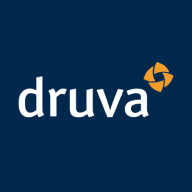

NetApp Cloud Volumes ONTAP and Druva Phoenix compete in the cloud data management category. Druva Phoenix seems to have an edge due to its comprehensive backup and disaster recovery features, though users report higher satisfaction with NetApp's pricing and customer support.
Features: NetApp Cloud Volumes ONTAP provides advanced data tiering, flexible workload support, and seamless data migration. Druva Phoenix offers automated disaster recovery, scalable architecture, and centralized data protection, highlighting its focus on backup solutions and disaster recovery capabilities.
Room for Improvement: NetApp Cloud Volumes ONTAP could enhance its disaster recovery options, streamline user management features, and expand its automation capabilities. Druva Phoenix may improve customer support responsiveness, reduce operational costs, and offer broader compatibility with additional platforms to extend its backup services.
Ease of Deployment and Customer Service: NetApp Cloud Volumes ONTAP is noted for its straightforward deployment and dedicated customer support, making integration with existing infrastructures easier. Druva Phoenix offers cloud-native deployment, simplifying processes but its customer support responsiveness could be improved compared to NetApp's.
Pricing and ROI: NetApp Cloud Volumes ONTAP is known for more cost-effective solutions with competitive pricing and ROI, especially in storage efficiency. Druva Phoenix, while having a higher upfront cost, provides significant value through disaster recovery features.


Druva Phoenix is a comprehensive cloud-based data protection and management solution that enables organizations to securely backup, recover, and manage their data across endpoints, physical servers, virtual machines, and cloud applications. With its scalable and flexible architecture, Druva Phoenix simplifies data protection and eliminates the need for traditional backup infrastructure.
By leveraging the power of the cloud, Druva Phoenix offers organizations a cost-effective and efficient way to protect their critical data. It provides automated backup and recovery capabilities, ensuring that data is always protected and easily recoverable in the event of a disaster or data loss. With its global deduplication and compression technology, Druva Phoenix minimizes storage requirements and reduces costs.
Druva Phoenix also offers advanced features such as point-in-time recovery, allowing organizations to restore data to a specific point in time, and granular file-level recovery, enabling users to recover individual files or folders. Its intuitive web-based console provides a centralized view of all protected data, making it easy to manage and monitor backups across the entire organization.
In addition to data protection, Druva Phoenix offers comprehensive data management capabilities. It enables organizations to gain insights into their data through advanced analytics and reporting, helping them make informed decisions and optimize their storage resources. Druva Phoenix also supports legal and compliance requirements by providing eDiscovery capabilities and ensuring data is retained and disposed of according to regulatory guidelines.
With its cloud-native architecture, Druva Phoenix offers organizations the flexibility to protect and manage their data across a wide range of environments, including on-premises, remote offices, and cloud applications such as Microsoft 365 and Google Workspace. It seamlessly integrates with popular cloud platforms like AWS and Azure, allowing organizations to leverage their existing cloud investments.
NetApp Cloud Volumes ONTAP is an efficient storage management solution for managing and storing data in the cloud. It offers seamless integration with cloud providers, advanced data replication capabilities, and high data protection. With reliable performance, it is ideal for industries like healthcare and finance.
We monitor all Cloud Backup reviews to prevent fraudulent reviews and keep review quality high. We do not post reviews by company employees or direct competitors. We validate each review for authenticity via cross-reference with LinkedIn, and personal follow-up with the reviewer when necessary.